Wildlife Sightings North And East Yorkshire - January 2019
With many birders rushing out to their local patches, the first day of the year always produces a big list of great birds. The male American Wigeon was quickly marked up, just after dawn on the 1st showing well at Bubwith Ings Lower Derwent Valley (LDV). Small numbers of Bohemian Waxwings were found again with three still in Hessle, two in Scarborough and six in Middlesbrough. The North York Moors National Park was the place to be for big raptors with the White-tailed Eagle reported and the Rough-legged Buzzard still present in Sleddale. South Gare held 20 Snow Buntings and 2 Lapland Buntings. Dalby Forest got on the map with the wintering Great Grey Shrike, nearby two Black-throated Divers were seen in the Scarborough area. Four Great Northern Divers in Filey Bay was a high local count, along with two Long-tailed Ducks. The male Smew was at Top Hill Low, two Shorelark were still at Easington, two Hawfinch were found at Fountains Abbey and the Slavonian Grebe was still at Skinningrove. Two male Hen Harriers were seen at Kilham in the Wolds and two roosted at Welwick. That’s a great list of birds but the biggest surprise was three White-beaked Dolphin present off Flamborough Headland for most of the morning on the 1st.
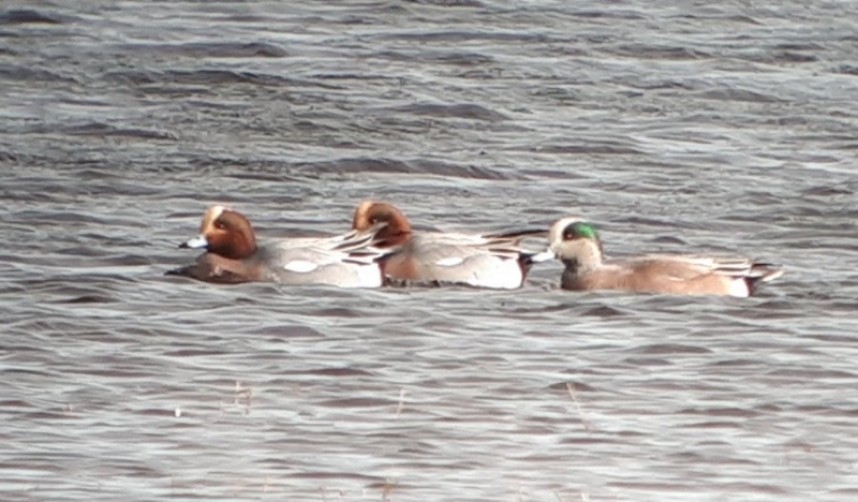
American Wigeon in the LDV © Jono Leadley
The wintering Great Grey Shrike in Dalby was still present on the 2nd with another on the same day in Langdale Forest confirming at least two wintering in the Great Yorkshire Forest. On the same day the Pied Crow was seen again in Flamborough village. Allerthorpe Common YWT was the place to be on the 3rd as a large flock of 200 Lesser Redpoll were examined in detail by local birder Tim Jones. A Coues’s Arctic Redpoll was a great reward for his patience plucked out from 20+ Common (Mealy) Redpoll. Scarborough Birders scored well on this day with Rosy Starling, Red-necked Grebe and 40 White-fronted Geese recorded in their area. The wintering immature Black Guillemot was seen again at South Gare on the 3rd. Eight White-fronted Geese and a single Tundra Bean Goose were at Bank Island LDV on the 4th. An inland Red-necked Grebe is always a good find and very rare in the York area so one on Castle Howard lake on the 5th was very popular with local birders. On the same day a polish ringed Caspian Gull was seen at Thorganby Ings LDV. Two Siberian Chiffchaff were found in our area in the first week of the year; one at Easington and at Helsington, York.
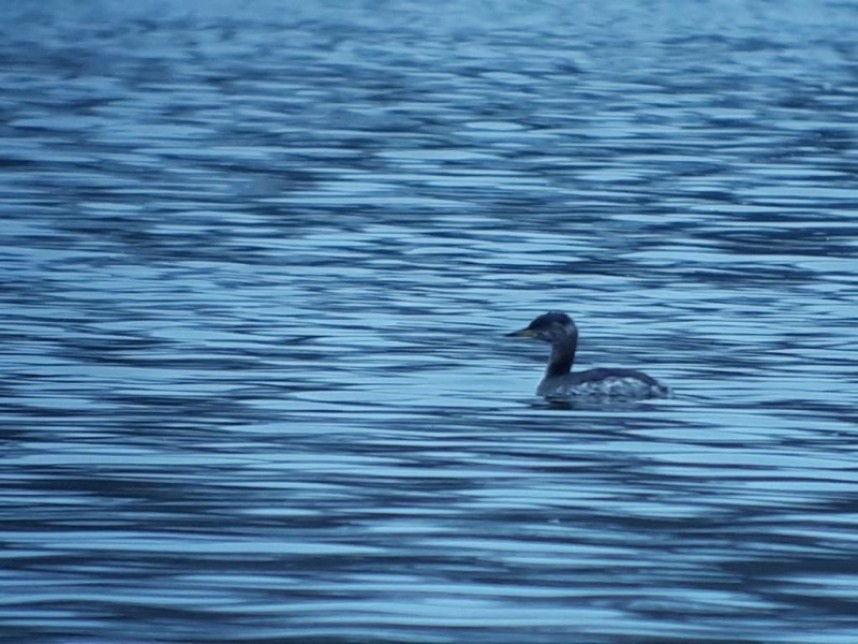
Red-necked Grebe at Castle Howard © Jono Leadley
On the 6th an impressive 60 White-fronted Geese were seen over Wykeham South Lake. Flamborough Headland held the monopoly of wintering Great Skuas with up to three seen daily from the 1st. Lapland Buntings have again been scarce this winter with virtually all sightings from South Gare, Long Nab or Flamborough and involving only small numbers. Flamborough picked up its first of the year on the 6th with four birds seen on the Outer Head. A Black Redstart was found at Bempton RSPB on the 5th and another, a male at Spurn on the 6th. The first Atlantic Puffin of 2019 flew south at Flamborough on the 7th. Down at Spurn on the 7th an impressive 1170 Oystercatcher were counted on the Humber.
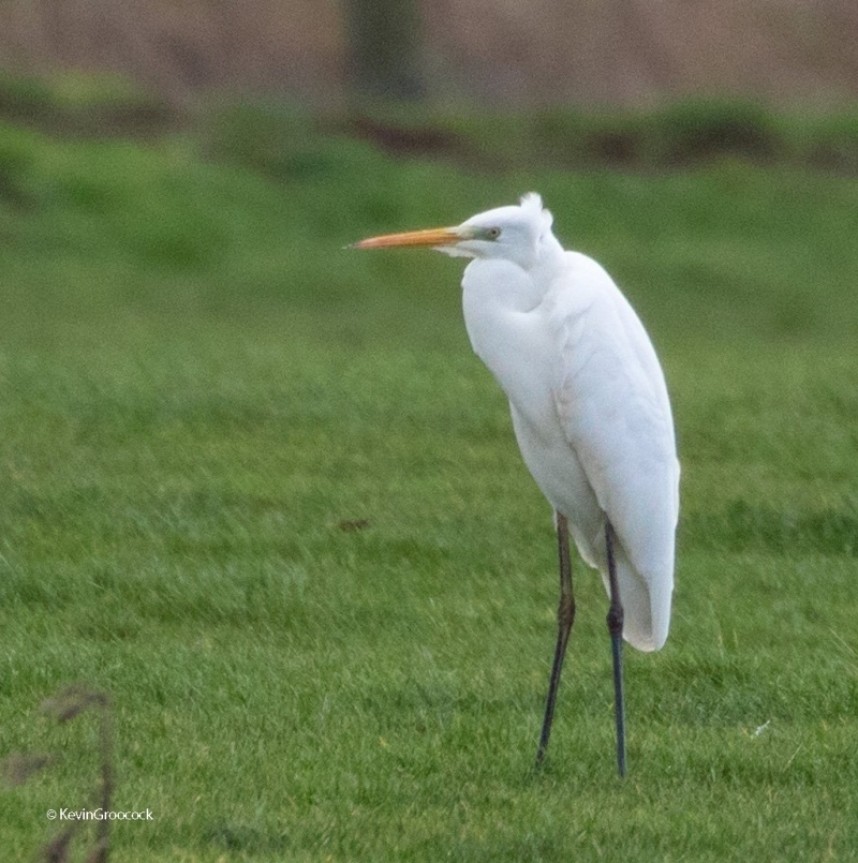
Great Egret Seamer Tip Pools © Kevin Groocock
Moths and butterflies were not surprisingly thin on the ground in the chilly conditions. However, the Scarborough moth team braved a winter night with their trap and came up with a small number of species on the 6th in the Wykeham Causeway area; nine Winter Moths, five Mottled Umber, one Chestnut and one Early Moth.
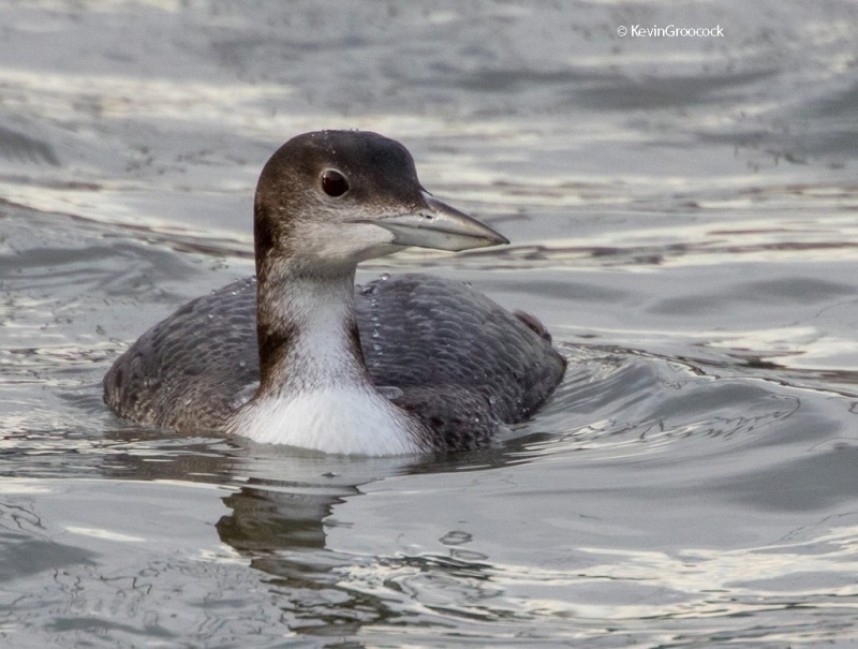
Great Northern Diver Scarborough Harbour © Kevin Groocock
Wykeham South Lake then had a good few birding days from the 8th with three Great Egrets on the 8th, Black-throated Diver and Great Northern Diver on the 9th and a Glaucous Gull on the 10th. Two Great Northern Divers were also in Scarborough Harbour on the 10th. It has been a very good winter for this species on the Yorkshire coast especially in the Filey and Scarborough area. Three Slavonian Grebes off Gristhorpe Bay on the 9th was an excellent local record. On the same day a Red-necked Grebe was found at Top Hill Low and three Long-tailed Duck were on the sea at Redcar with two Velvet Scoter seen the following day. A Hawfinch was seen at Guisborough on the 10th, an area where this species used to nest regularly. Welwick Saltmarsh remained the best place to see Hen Harriers in East or North Yorkshire this winter, three were seen there on the 10th along with a Short-eared Owl.
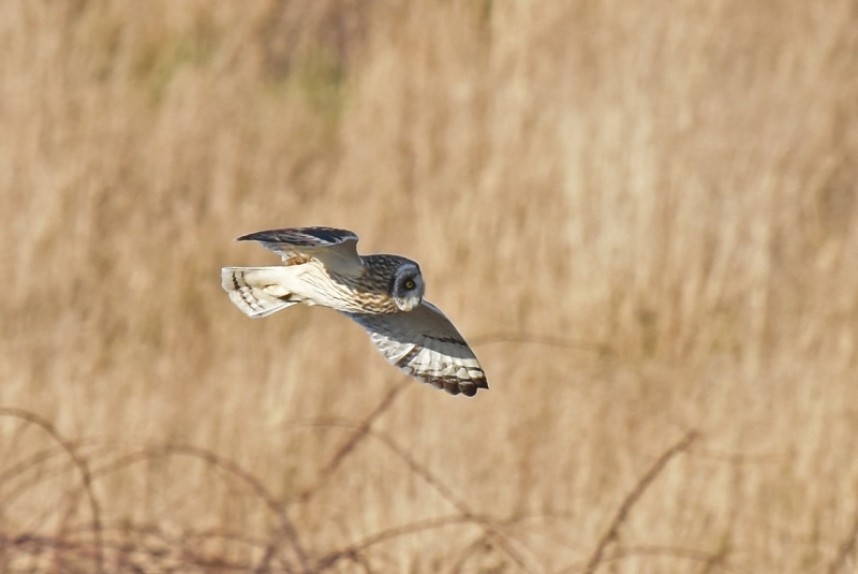
Short-eared Owl at Flamborough © Andy Hood
The LDV had a great day on the 10th with a male Smew, the American Wigeon and a male Green-winged Teal all seen. A good count of 65 Purple Sandpipers was made at Flamborough by the Fog Station on the 10th, nearby 41 Great Crested Grebes were counted on the sea off Sewerby. A male Green-winged Teal then arrived at Kilnsea Wetlands on the 11th and a Glaucous Gull was seen nearby. In the York area, a Firecrest was a good find at Strensall Common. Up at Flamborough the first Eurasian Bittern of the year was seen flying towards Thornwick Pool on the 11th. Two Rough-legged Buzzards were seen at Stanghow Moor on the 12th and a Glaucous Gull was at Top Hill Low on the same day. The Snow Bunting flock was counted at 30 birds at South Gare on the 13th, rising to 32 on the 29th, alongside the regular flock of approximately 100 Twite.
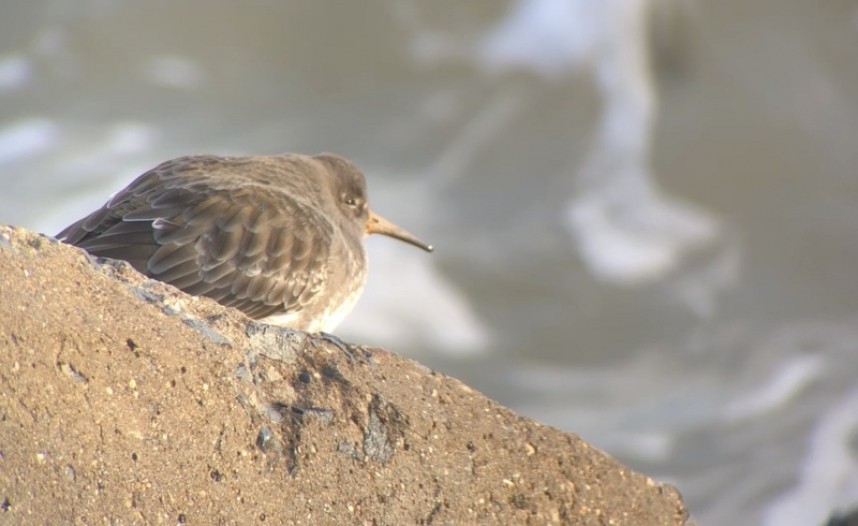
Purple Sandpiper Scarborough Harbour © Richard Baines
The male Smew presumed from Top Hill Low arrived at Hornsea Mere also on the 13th. On the same day in the Scarborough area it was Egret heaven with five Little Egret and three Great Egret seen. For big numbers of Little Egret though look no further than Bolton-on-Swale this winter where there has been up to 45 in the roost along with 21 Whooper Swans feeding in nearby fields.
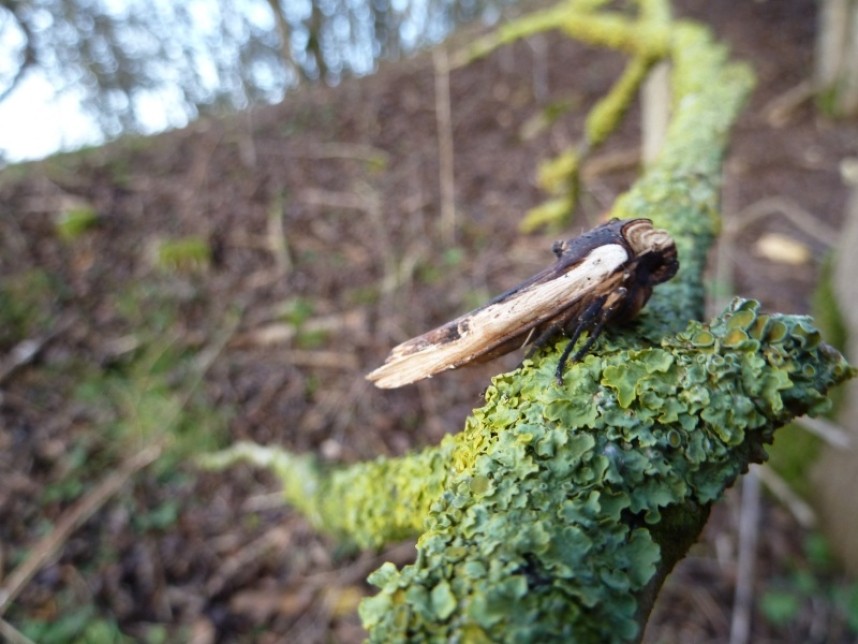
Red Sword-grass Broxa Forest © Allan Rodda
Small numbers of moths were still being reported mid-month. A Red Sword-grass was trapped by the Scarborough moth team on the 12th in Broxa Forest. On the 13th a bat survey in the cinder track tunnel at Ravenscar produced some unexpected insect highlights in the form of a Tissue Moth and 31 The Herald moths all found on the tunnel wall.
The first Pink-footed Goose movement of the year was picked up at North Duffield Carrs (LDV) on the 14th when 110 were seen. A Eurasian Bittern was seen at Welton Water on the same day along with a male Smew nearby flying along the River Humber. A Glaucous Gull flew past Flamborough on the 15th. Another big Lesser Redpoll flock was found, this time at Strensall Common on the 15th where 250-300 birds were counted. A possible Pacific Diver was reported off Filey Brigg on the 16th, this would have been a very rare and popular bird if confirmed, alas the bird was not seen again… On the same day the flock of Corn Buntings at Buckton reached 80 birds and the wintering Whimbrel was seen at Cloughton near Scarborough.
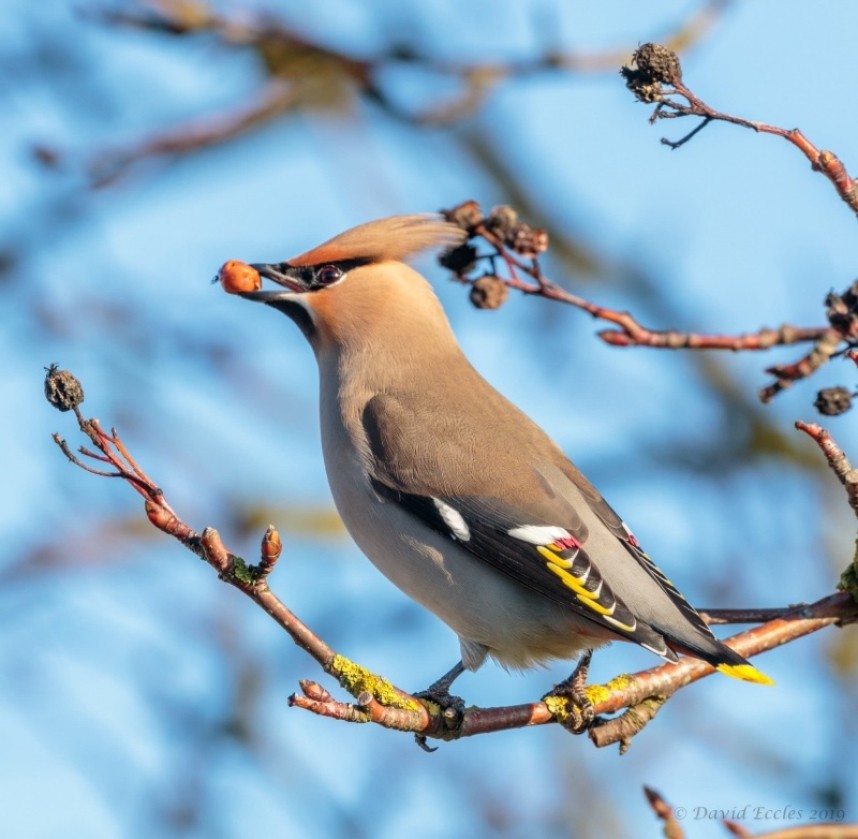
Bohemian Waxwing at Filey © David Eccles
A Great Grey Shrike appearing in your garden in the middle of North Yorkshire would be a big surprise, one did just that in a biredsr garden in Gunnerside on the 17th. A Water Pipit was found at North Cave wetland YWT on the 17th. Another Eurasian Bittern was seen on the 18th this time at Barton Ness End along with a Great Egret at the same site. A female Black Redstart was at Flamborough on the same day and a Jack Snipe at Thornwick Pools a day later. A site record 936 Eurasian Wigeon were recorded at Kilnsea Wetlands on the 19th. The following day the first Snow Buntings of the year in the Spurn area were six near Easington on the boulder clay cliff. Two separate Great Grey Shrikes were again seen in the eastern Great Yorkshire Forests on the 22nd one in Langdale and one in Dalby although neither bird seemed very site faithful this winter compared with previous winters. With so many forest clearings over a large area it’s a bit of a needle in a haystack this year. Two Hawfinch were at Skelton Castle, a regular site for the past two winters, on the 22nd. A Black Redstart was found in Whitby opposite St. Mary's Church on the 23rd and a Red-necked Grebe was at Nosterfield Nature Reserve the same day. Two Bohemian Waxwings visited a birders road in Filey on the 24th. A second locally significant Corn Bunting flock has been monitored on the coast this winter in the Scarborough area at Low Marishes, 46 were counted here on the 25th. On the same day a Caspian Gull was found in the gull roost at Top Hill Low.
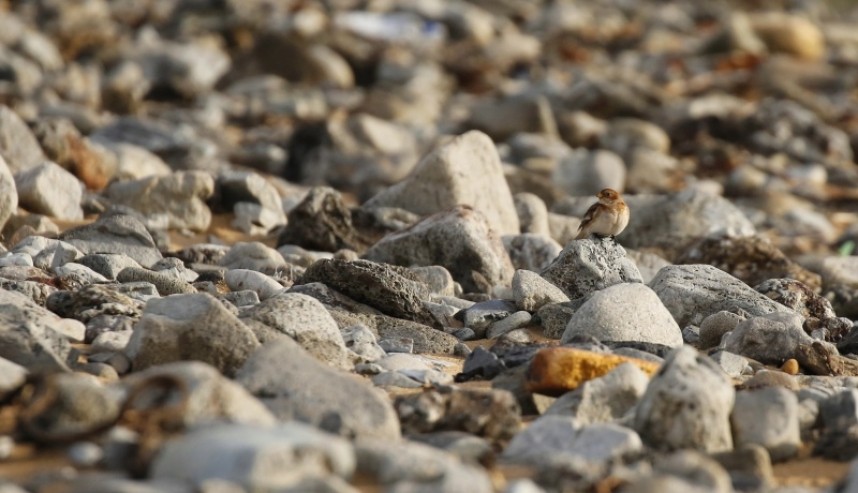
Snow Bunting at South Gare © Richard Baines
A large feeding frenzy of seabirds off Flamborough Fog Station on the 26th contained large numbers of Gulls, over 500 Northern Gannets, a single Manx Shearwater and an Iceland Gull with the regular Short-eared Owl showing again in the Lighthouse grassland. The Buckton bunting flock was again counted on the 30th and a fantastic 194 Corn Buntings found which must be one of, or possibly the largest flock in Yorkshire this winter. Two Water Pipits were seen at Blacktoft Sands RSPB on the 30th, this site has been the most reliable place for this species in our area this winter. On the last day of the month seven Bohemian Waxwings arrived to spend a few days in Thornton-le-Dale. At Hornsea Mere the regular wintering Barnacle Goose flock was counted at 130 birds and a Eurasian Bittern was seen from the Wassand bird hide at the western end of the Mere.
Many thanks to all the observers who contributed sightings and photographs. This article covers North and East Yorkshire. For more wildlife sightings visit these great local, regional and national web sites
Spurn Bird Observatory, Flamborough Bird Observatory, Filey Bird Observatory and Group, Northern Rustic blogspot , Yorkshire Naturalists Union, Yorkshire Wildlife Trust, Scarborough Birders, Butterfly Conservation Yorkshire Branch Yorkshire Nature Traingle Smew photo by Mike's Nature Photography
For National News: Birdguides
Richard Baines
Yorkshire Coast Nature



 Back to Blog
Back to Blog
